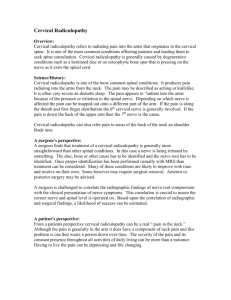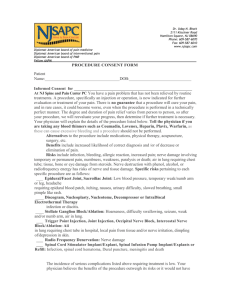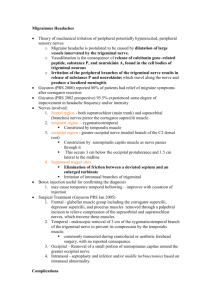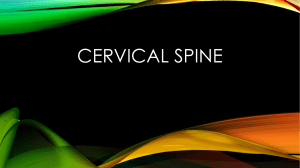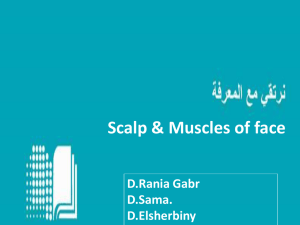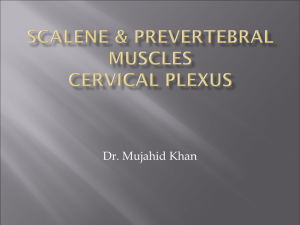Occipital Neuralgia
advertisement
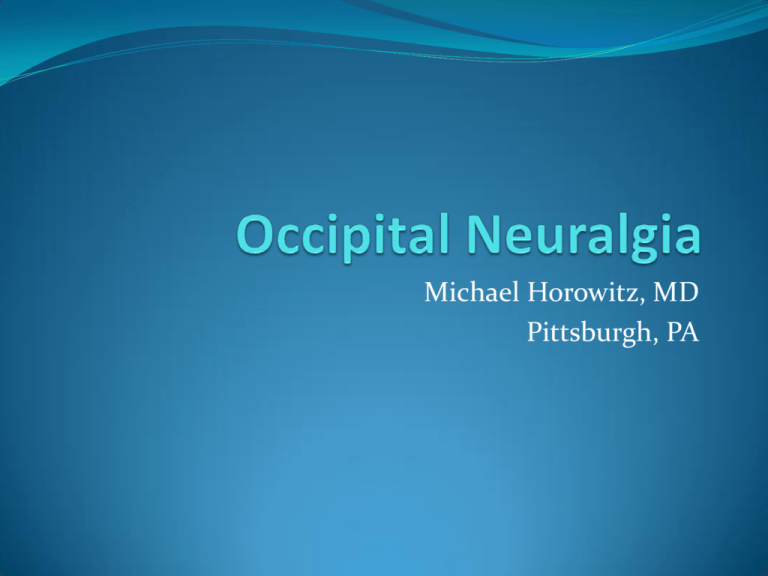
Michael Horowitz, MD Pittsburgh, PA Anatomy The Greater Occipital Nerve arises from CN 1,2,3 Signs and Symptoms Sharp, lancinating, shooting pain in back of head Usually unilateral May be spontaneous or triggered by touching area behind ear along nuchal line May have ocular pain May have decreased sensation to pin prick in occipital region Differential Diagnosis Migraine Cervical spine arthritis Pain secondary to Chiari malformation Etiology Traumatic injury to nerve Facial scarring around the nerve as it penetrates muscle Cervical spine arthritis and compression of cervical nerves 1,2,3 Diagnostic studies Cervical spine films to evaluate for arthritic changes and instability (flexion/extension films) CT cervical spine to evaluate nerve root foramina MR to evaluate for tumor, Chiari I malformation Peripheral nerve block CT guided nerve block of cervical roots C2,3 Treatment Physical therapy with massage, heat Peripheral nerve blocks using –caine medications mixed with steroid Oral pain medications Anti-inflammatory medications (steroids; NSAID) Peripheral radiofrequency rhizotomy Peripheral occipital nerve sectioning Muscle fascial release to decompress nerve Occipital nerve decompression at neural foramina Intradural dorsal nerve root sectioning (C1,2,upper fascicles C3) (see surgical video on this web site’s video section) Complications and Side Effects All surgical procedures create permanent decreased sensation or numbness in the occipital region Pain may recur despite continued permanent numbness. Reason may be central pain generation in brain or spinal cord and may be secondary to connections between the C1,2,3 nerves and the trigeminal spinal nucleus located in the upper cervical spinal cord Shoulder and neck weakness (<1%) Infection <5%) Spinal fluid leak (<5%) Weakness/Paralysis (<1%)

